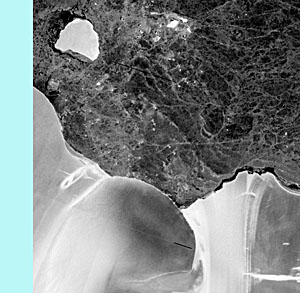Cryosphere

The cryosphere (from Greek kryos for cold) comprises all frozen parts of Earth. These are to a large part the frozen water bodies of the mountain glaciers, polar ice caps and sea ice are part of the hydrosphere. Additionally, the permafrost regions, frozen parts of the soil, are part of the cryosphere.
In total Earth’s cryosphere covers about 10 percent of the Earth surface. Due to the climate change with rising global temperatures the cryosphere is shrinking.
Select your Case Study:
| Glaciers, the frozen rivers | |
|---|---|
| Columbia Glacier, U.S.A. Higher temperatures and the rising sea level lead to a rapid decay of the Columbia Glacier. |
|
| Aletsch Glacier, Switzerland The largest glacier of the Alps is an example of the retreat of alpine glaciers. |
|
| Kilimanjaro Glacier, Tanzania There are not many glaciers in the tropical climate zone, and they are shrinking. |
|
| The frozen polar caps of Earth | |
| Arctic Sea Ice While the sea ice coverage around the North Pole undergoes large seasonal changes, it is shrinking due to climate change. |
|
| Jakobshavn Isbrae, Greenland (Denmark) The shrinking of the Greenland ice sheet, the second largest ice body on Earth, contributes to the global sea level rise. |
|
| Ice of Antarctica The antarctic ice bodies are the largest on Earth. |
|
| Iceberg A23a, Antarctic Ocean Large icebergs calving from the ice shelves around the Antarctic ice sheet are an important factor in the proceeding ice loss. |
|
| Permafrost regions | |
| Batagaika Crater Thawing permafrost in Siberia due to global warming leads to enhanced erosion of the soil. |
|



